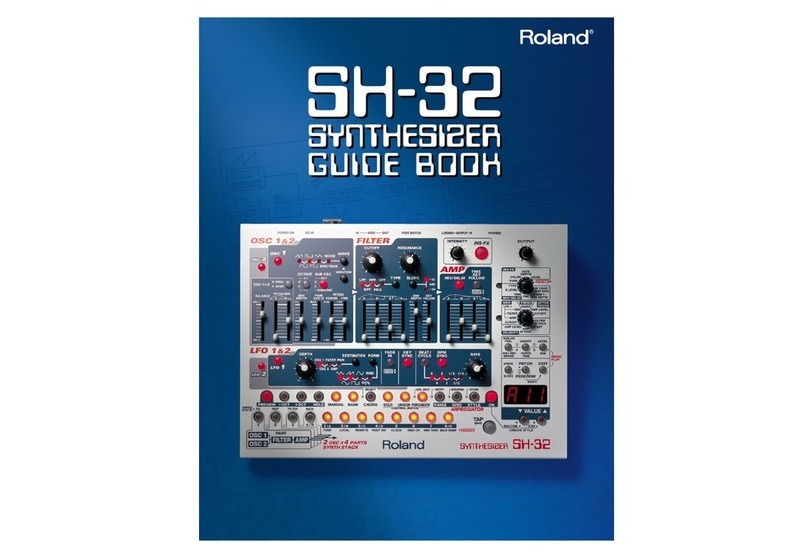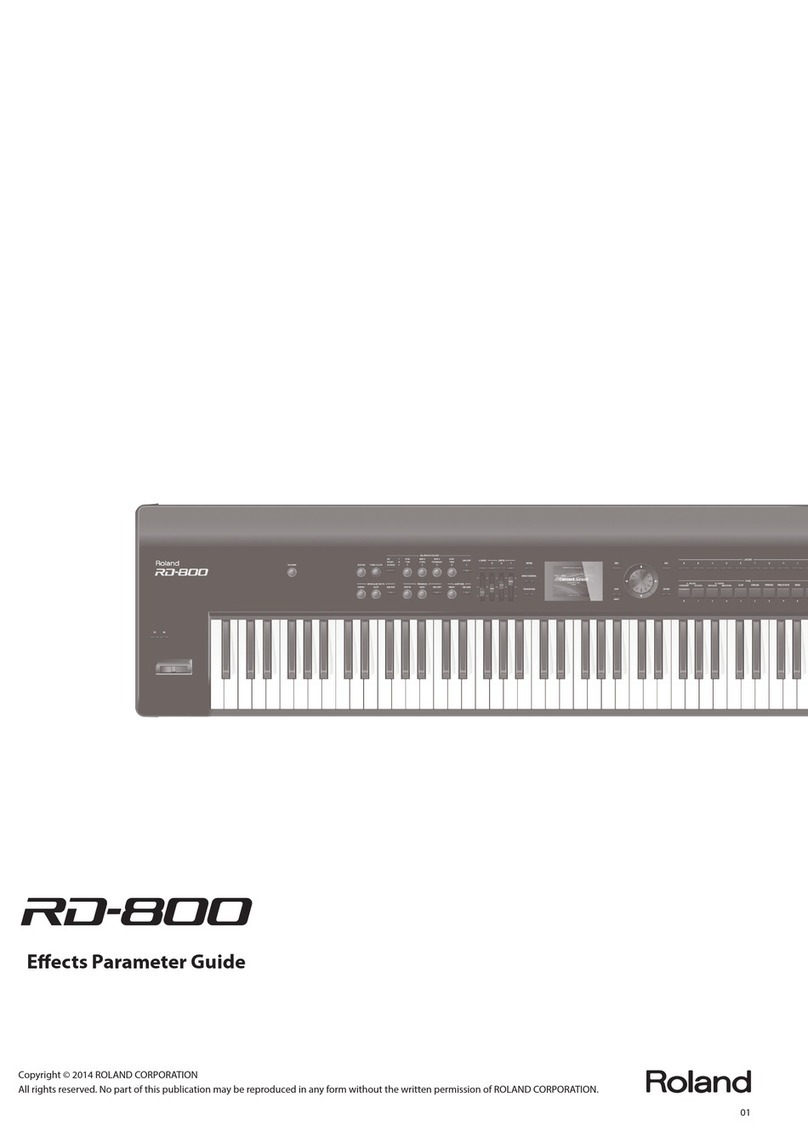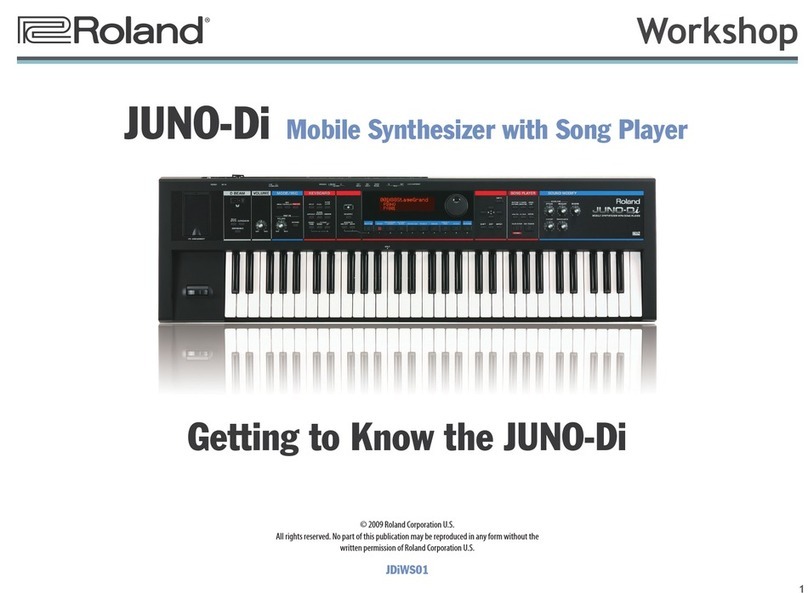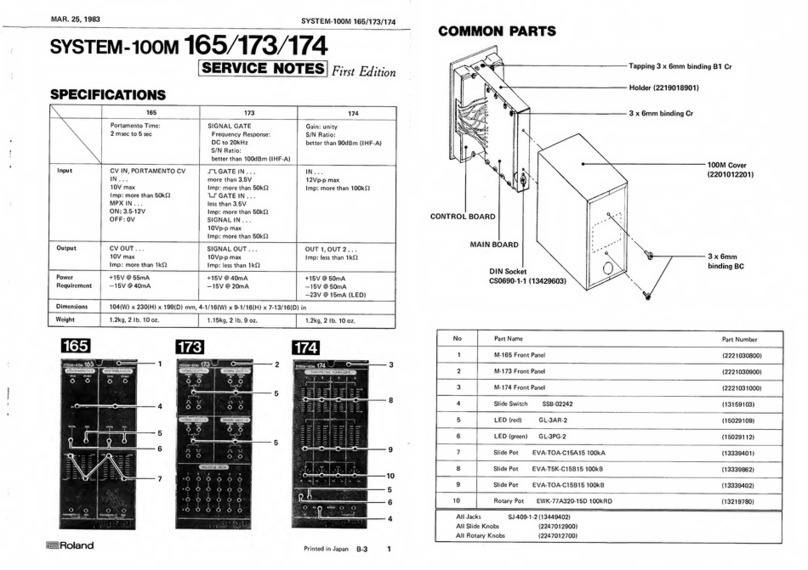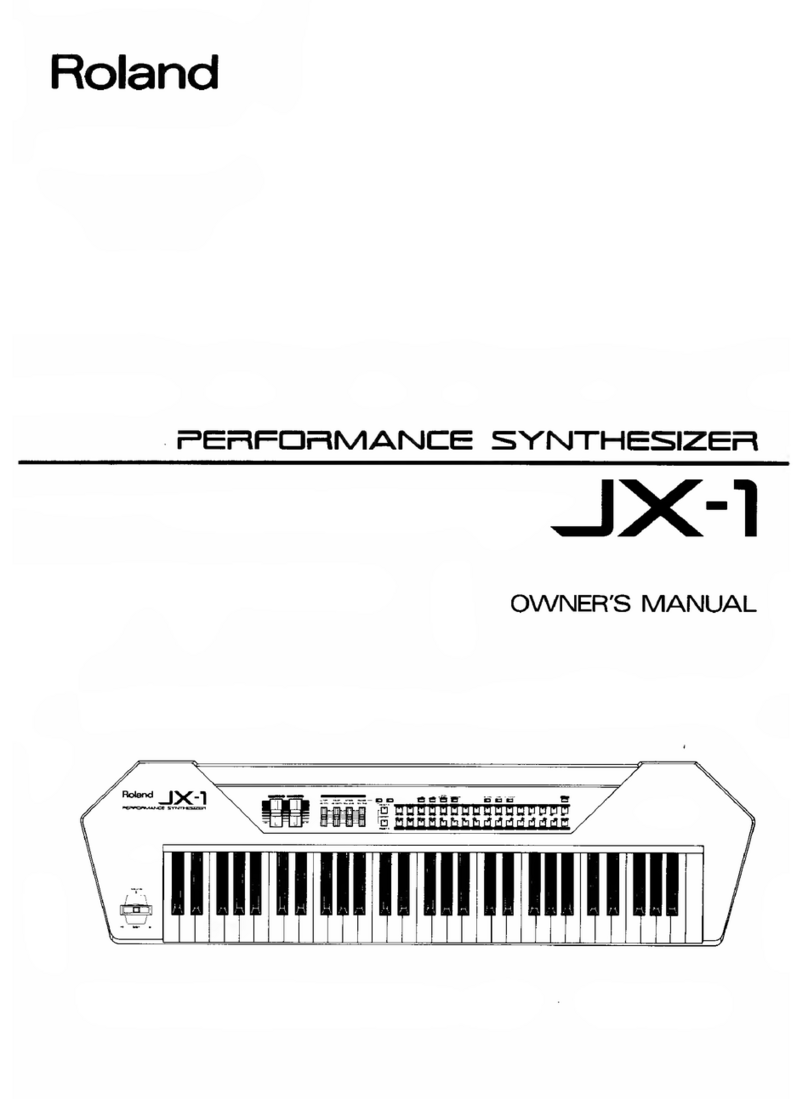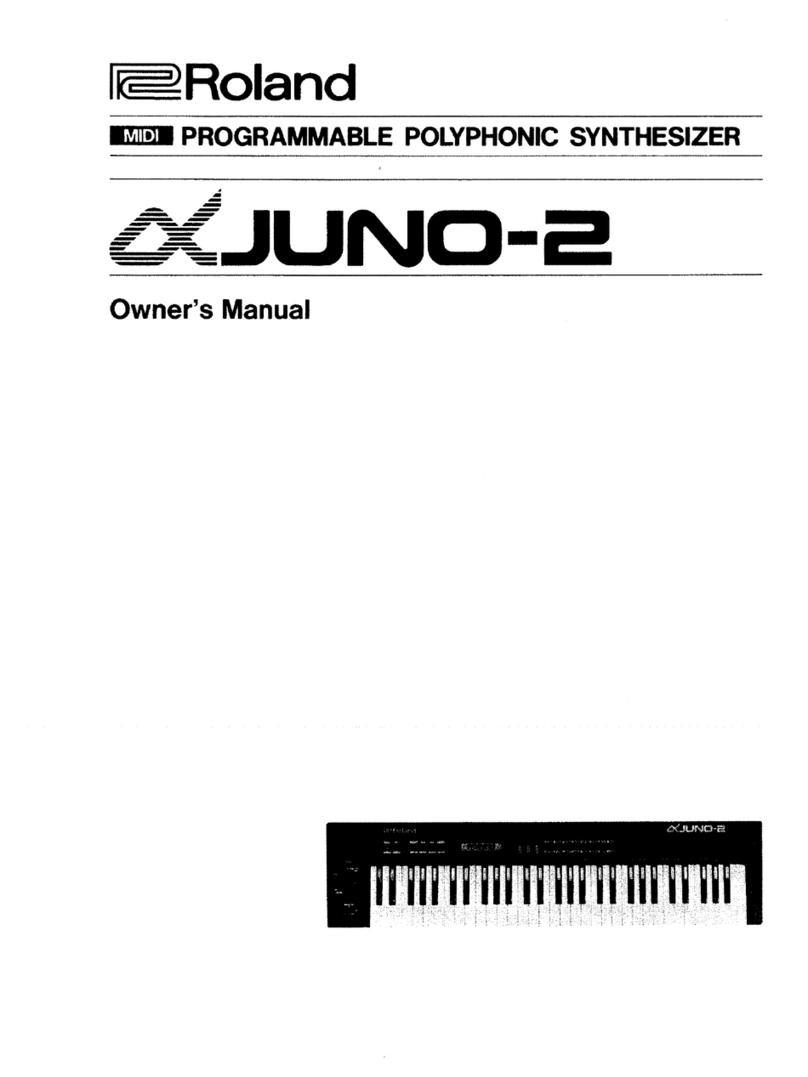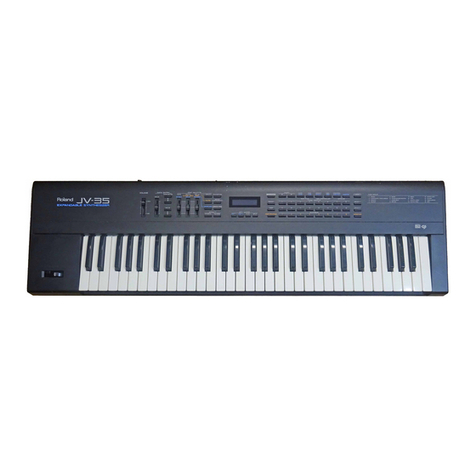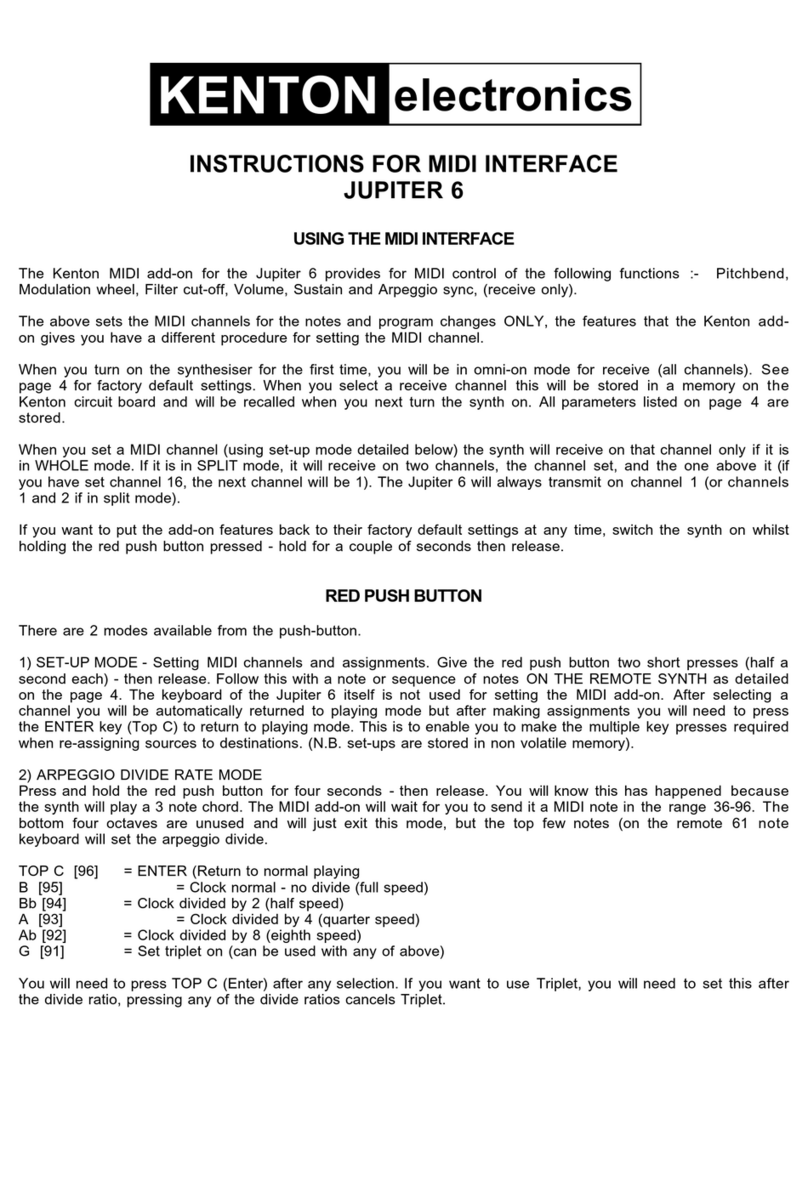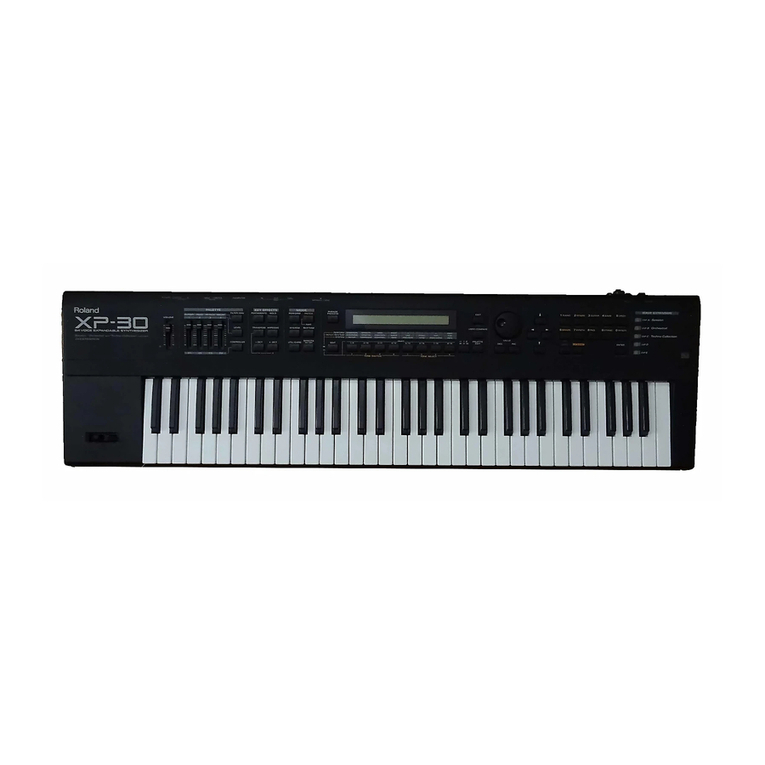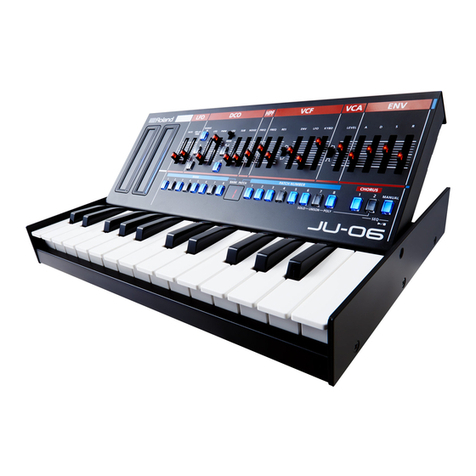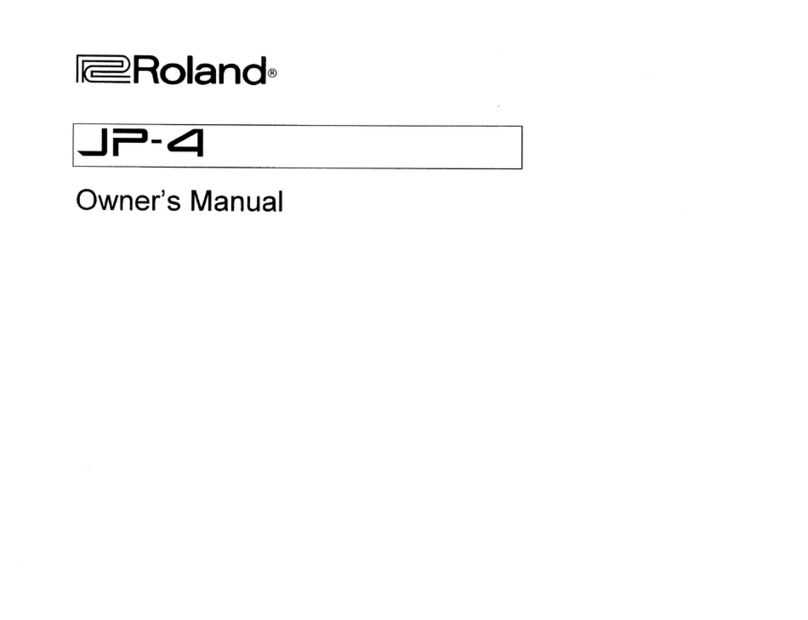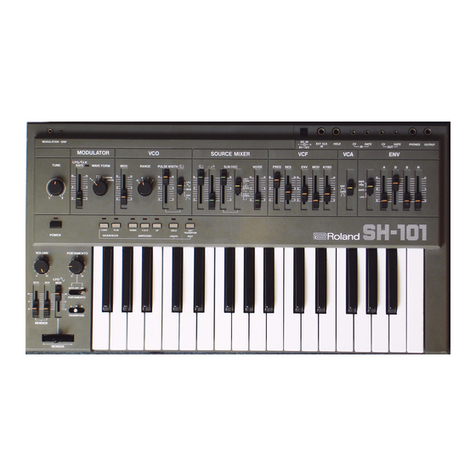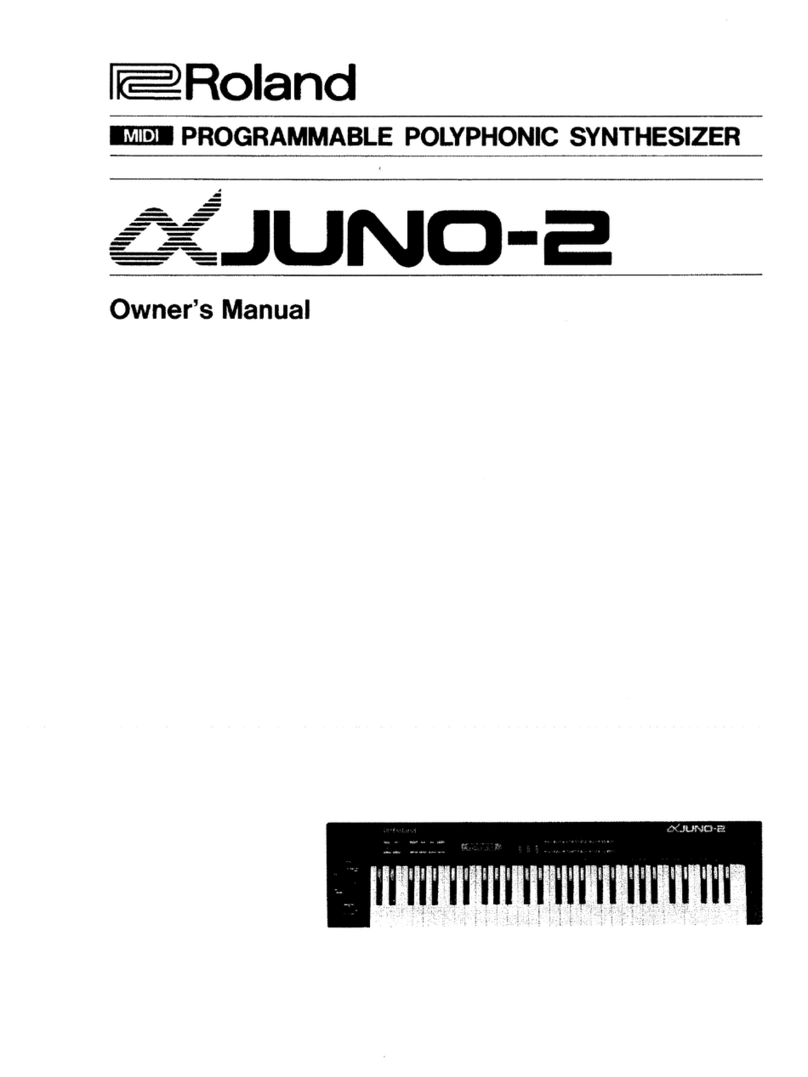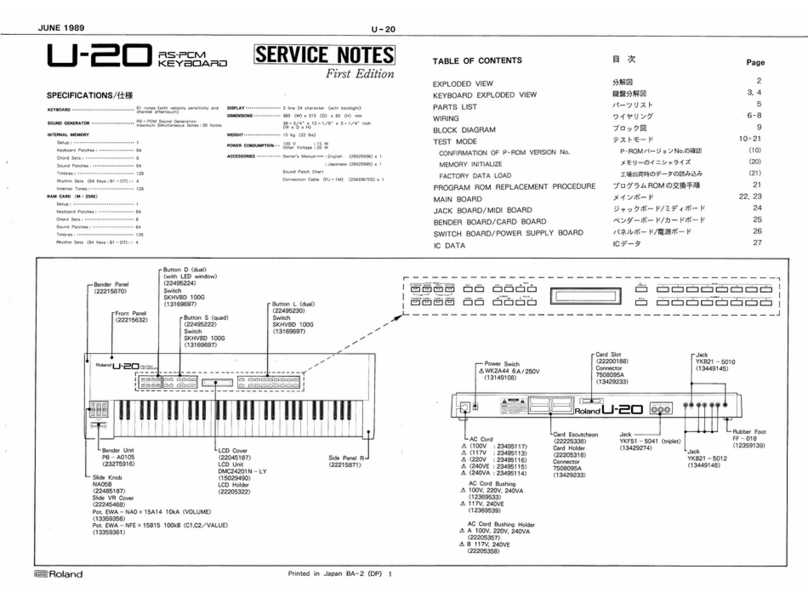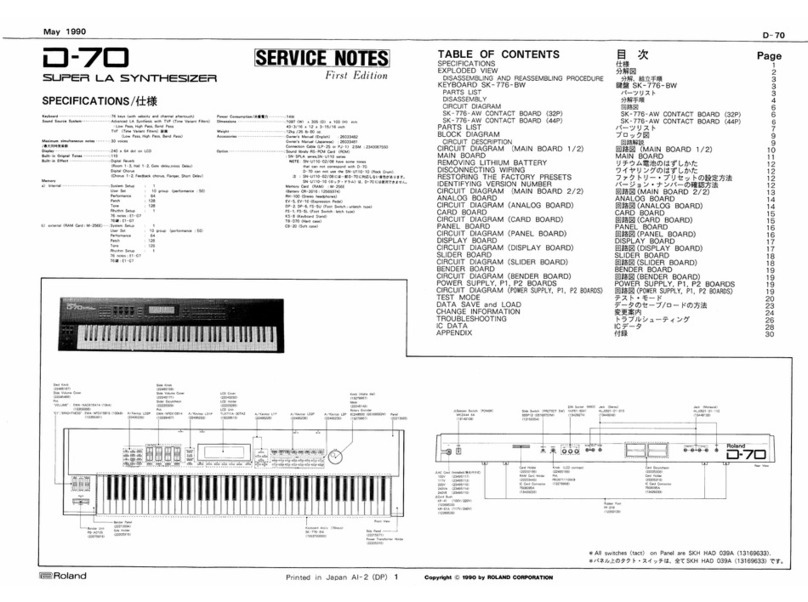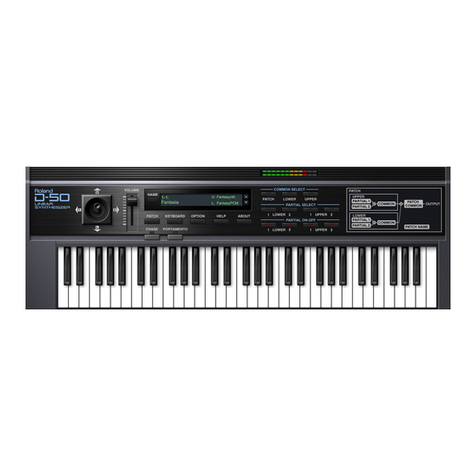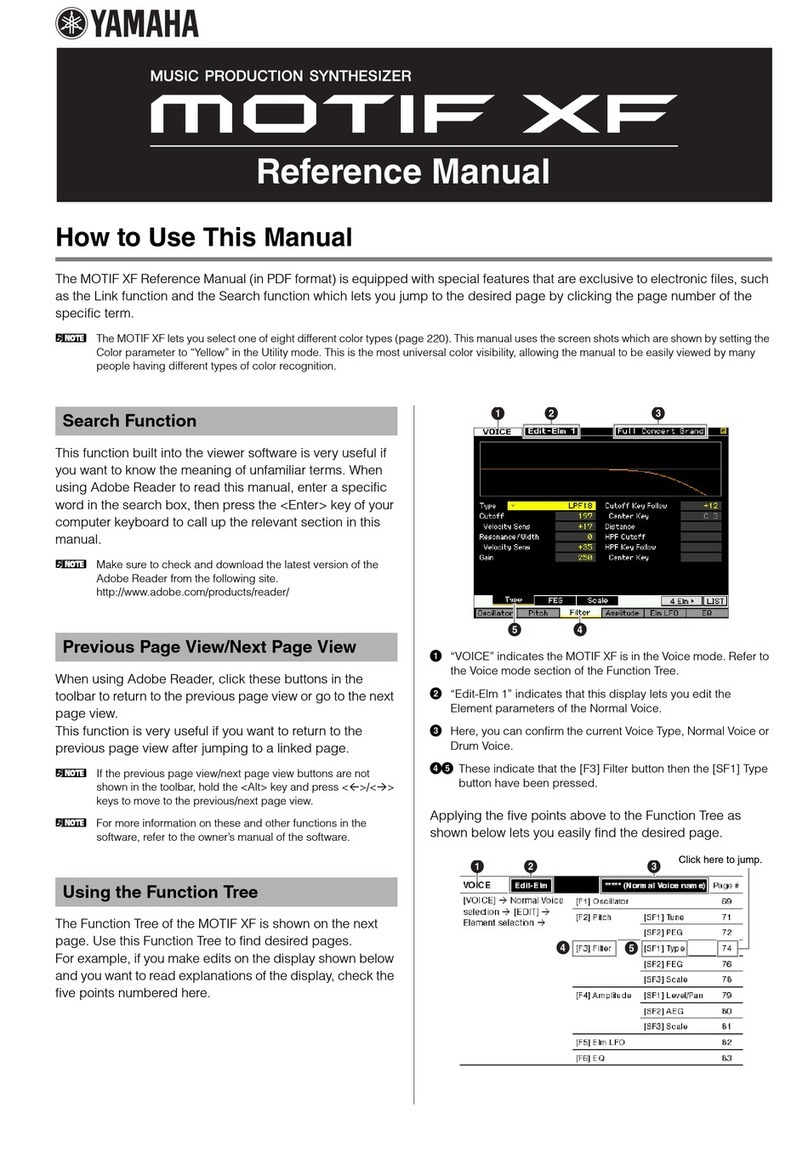The Roland
voice fully
synthesizer.
Juno-60 is 61 key, 6
programmable polyphonic
•The Juno-60 includes memory capacity
to retain up to 56 different synthesizer
patches. (8 patches x7banks)
•Any program in memory can be tempo-
rarily edited during live performance,
•The Juno-60 features battery back up
system to retain the programs even when
switched off.
•The Tape Memory interface allows any
patch programs to be saved into an ordi-
nary tape recorder for storage and later
retrieval.
•If connecting the Pedal Switch to the
PATCH SHIFT jack, you can call the 8
patch programs stored in the same bank
one after another, simply by pressing the
pedal.
•The digitally controlled oscillator (DCO)
guarantees an extremely stable pitch.
•This is the complete 6voice polyphonic
synthesizer provided with 6VCF's, 6
VCA'sand6 ENVs.
•Wide variations of the Arpeggio Patterns
are available by changing the MODE and
RANGE switches.
•The Chorus effect produces rich and ex-
pansive sounds.
•Transposition to any key is possible by
the Transpose function.
•The Juno-60 can be driven by the MC-A
micro-composer by using its PCB con-
nector.
•It is necessary for you to understand the
functions of the controls and selectors of
the Juno-60 perfectly to fufly enjoy the
advantages of the unit. Some setting
examples are shown in this manual to
make it easier for you to master how to
operate the Juno-60, but you are the one
who creates the sounds. Please find out
your own setting and new ways of play-
ing.
<Important
)
•Please do not turn the Power switch on
immediately after turning it off; wait for
afew seconds.
Contents
Basic Connections 5
Functions 6
I. Memory Functions 6
Memory 6
Tape Interface 9
II. Functions for Sound Creating ... 12
DCO 12
HPF 14
VCF 14
VCA 16
ENV 16
LFO 17
I. Functions for Playing 18
Keyboard 18
Controllers 18
Arpeggio 19
Hold 20
Key Transpose 20
Remote Controls 21
IV. Effects 22
Chorus 22
Other Effects (Optional) 22
'Arpeggio Sample 23
1Sample Sounds 24
1Sound Synthesis Memo 29
Specifications 32
Options 33
